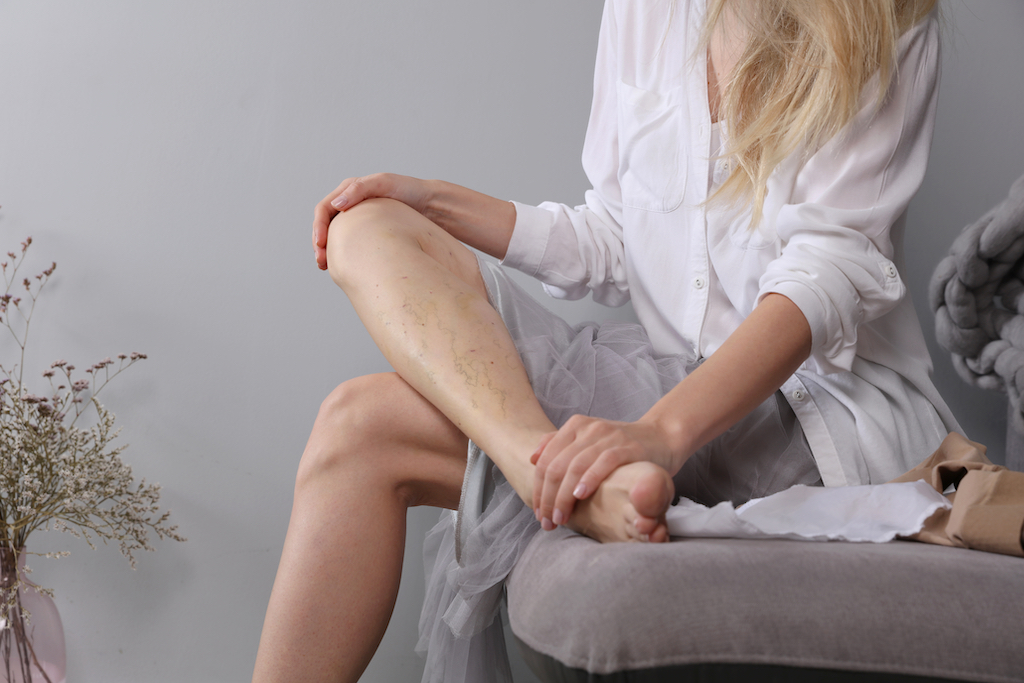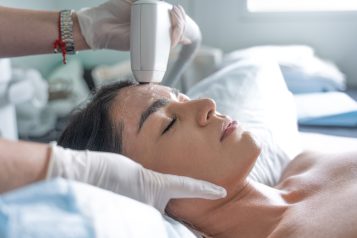 Photo Credit: Shutterstock
Photo Credit: Shutterstock
Varicose veins are a common condition that affects millions of people worldwide, causing discomfort and unsightly bulges in the legs. Over the years, several treatments have emerged to address this issue, including the use of foam sclerotherapy and Varithena. While both methods have been proven to be effective, they differ in their approach and techniques. Haute Beauty expert Dr. Susan B. Fox, compares Varithena and ultrasound-guided foam sclerotherapy, two popular treatments for varicose veins, exploring their benefits, drawbacks, and effectiveness to help you make an informed decision on which option may be right for you.
The Differences Defined
Varithena is an FDA-approved micro-foam used to close branches of the Greater Saphenous Vein and varicose veins above and below the knees. This medication uses a proprietary mixture of carbon dioxide and oxygen with polidocanol (an FDA-approved sclerosant) to create a shaving cream-like foam mixture, which is injected into veins to treat larger veins. The solution comes in a special canister that mixes the medication to create uniform-sized microbubbles. The foam essentially pushes the blood in the vessel out of the way, allowing longer contact with the vein walls to promote more inflammation and closure of the veins.
In contrast, ultrasound-guided foam is created by agitating either polidocanol or sotradecol with room air to create a foam solution also used for injection into veins. This foam is also used to treat varicose veins, but it is created using a different method and with a different set of ingredients.
The Benefits of Varithena
Varithena is a standardized micro-foam, with bubbles and foam of the same size every time. This makes it more reproducible than homemade foam sclerotherapy.
Why Home-Made Ultrasound Guided Foam Sclerotherapy
Varithena can be very expensive and is not covered by all insurance, despite receiving FDA approval in 2013. As a result, homemade ultrasound-guided foam sclerotherapy can be a great alternative in cases where Varithena is not covered by insurance.
View this post on Instagram
The Benefits of Sclerotherapy
Foam sclerotherapy has a success rate of 94-100% and can be used on medium to large varicose veins. This non-invasive treatment does not require any incisions or downtime, allowing the patient to return to most normal activities immediately. However, patients may need to wear compression hose or wraps for a limited period of time following treatment.
Side Effects
Both Varithena and foam sclerotherapy uses the same solution of polidocanol. A small number of people may experience allergic reactions to polidocanol, and if the solution leaks out of the vein or gets into the tissue, it can create a sore. Additionally, the treated vein may become hard, lumpy, and discolored for several months as it is resorbed by the body. Although extremely rare, it is possible for the treatment to cause neurological events such as migraines or strokes. Despite these risks, both treatments are generally considered very safe with limited to no downtime
For more information, visit Dr. Brian A. Levine's social media:

























